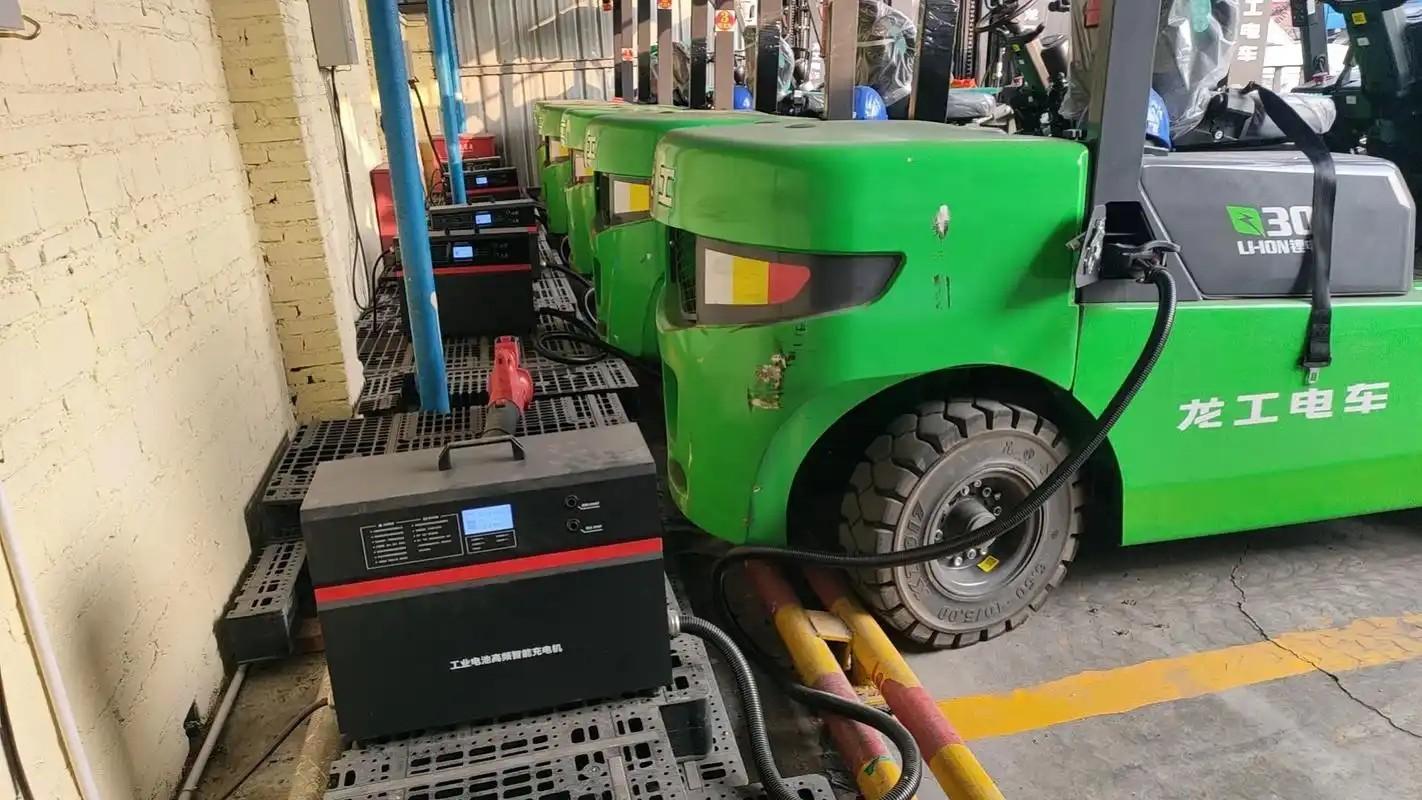
In modern warehouses and distribution centers, the choice of energy source for forklifts has a direct impact on operational uptime, running costs, safety, and environmental footprint. Lithium iron phosphate batteries (LiFePO4 or LFP) have emerged as a leading replacement for traditional lead-acid batteries in electric forklifts. This article outlines the practical benefits of LFP technology, supported by industry data and trusted sources, to help purchasing and operations teams make a well-informed decision.
Transitioning a forklift fleet from lead-acid to LiFePO4 isn’t usually about one single advantage — it’s about a combination of improvements that lead to lower total cost of ownership (TCO), enhanced safety, and greater operational productivity.
1. Greater Efficiency & Lower Energy Consumption
LiFePO4 batteries convert a larger share of electrical input into usable power compared to lead-acid batteries. This improved energy efficiency allows forklifts to operate longer per kilowatt-hour and reduces overall electricity consumption across the fleet. Industry reports confirm that lithium-powered forklift systems are significantly more efficient than their lead-acid counterparts, increasing throughput while lowering energy expenses.
2. Much Longer Cycle Life — Real Long-Term Savings
One of the most compelling business arguments for LFP is its cycle life. Typical LFP batteries used in material handling often deliver 2,000–3,500+ cycles, while lead-acid batteries generally last between 500–1,500 cycles depending on maintenance and usage. This extended lifespan reduces the frequency of replacements and cuts down on waste — a major contributor to lower total cost of ownership.
In practice: fleets operating multiple shifts per day may replace lead-acid batteries every few years, whereas LFP batteries often last several times longer — reducing both capital and labor expenses.
3. Fast & Opportunity Charging — More Uptime, Less Downtime
LFP chemistry supports high-rate charging and is safe for “opportunity charging” — quick top-ups during breaks or shift changes. Full charging times for lithium forklift batteries usually range from under an hour to two hours, while lead-acid batteries typically require 8 hours for a full charge plus a cool-down period before reuse. Faster, more flexible charging keeps forklifts in operation and reduces the need for spare battery backups.
4. Lower Maintenance & Simplified Operations
Lead-acid batteries require regular watering, periodic equalization charges, and careful charging schedules to prevent damage. LiFePO4 batteries eliminate watering and reduce routine maintenance, cutting labor requirements and unplanned downtime. For operations managers, this means fewer service interruptions and simpler battery room management.
5. Consistent Power & Performance
LiFePO4 cells maintain a more stable voltage during discharge, providing steady torque and predictable performance throughout the work shift. This consistent power output is especially valuable for load handling and precision tasks — particularly where constant speed or lifting power is essential.
6. Smaller & Lighter Designs — Improved Maneuverability & Payload
Thanks to their higher usable energy density, LFP batteries are often smaller and lighter than lead-acid systems with equivalent capacity. This results in better forklift maneuverability, less strain on the chassis, and the potential to increase payload capacity or reduce wear on tires and drivetrain components.
7. Enhanced Safety & Thermal Stability
LiFePO4 chemistry is among the safest lithium-based options available. It offers excellent thermal and chemical stability, with a lower risk of thermal runaway compared to other lithium-ion variants. It also avoids hazards associated with lead-acid batteries, such as acid leaks and hydrogen gas emissions during charging. This improves workplace safety and may reduce the need for special battery rooms or ventilation systems.
8. Environmental Benefits
LFP cells are made from iron, phosphate, and carbon, and do not contain significant amounts of heavy metals such as lead, cadmium, or cobalt. This reduces toxicity concerns at end-of-life and simplifies recycling compared to lead-acid disposal. Many companies are adopting LFP in part to improve their sustainability profile.
9. Total Cost of Ownership & Return on Investment
Although the upfront price of an LFP battery pack is often higher than a comparable lead-acid unit, the total cost of ownership typically favors LFP due to reduced energy use, lower maintenance labor, fewer replacements, and less need for spare batteries. Multiple industry analyses and case studies show payback periods ranging from months to a few years, depending on usage intensity, electricity rates, and labor costs.
When evaluating LiFePO4 forklift batteries, be sure to confirm:
- Cycle life warranty and expected cycles at typical depth of discharge
- Charger compatibility and charging profile (including opportunity charging capability)
- Battery Management System (BMS) features: cell balancing, state-of-charge reporting, thermal management
- Manufacturer support services and end-of-life recycling programs
- A realistic TCO projection based on your specific duty cycle
For operations focused on maximizing uptime, ensuring predictable performance, and minimizing long-term costs — especially in multi-shift environments — LiFePO4 batteries represent a compelling upgrade from lead-acid. They deliver faster charging, longer service life, reduced maintenance, and improved safety and sustainability. That powerful combination is why more and more material handling fleets are making the switch.
Q: Are LiFePO4 batteries suitable for 24/7 multi-shift use?
A: Yes — LFP chemistry supports fast and frequent opportunity charging, and many LFP batteries are specifically designed for multi-shift operations. Confirm BMS and thermal management specifications with your supplier.
Q: Do I still need spare batteries or a dedicated battery room?
A: In many cases, LFP systems reduce or eliminate the need for large spare battery banks and dedicated battery rooms, since opportunity charging can be done during short breaks. Final requirements will depend on your site layout and operational workflow.
Q: What is the typical lifespan in years?
A: Service life varies based on usage and charging habits, but many LFP batteries achieve several thousand cycles — often equating to 5–10+ years in typical warehouse applications.
Next:None
Previous:EVE Energy Shines with Full-Scenario Energy Storage Solutions at SNEC ES+ 2025